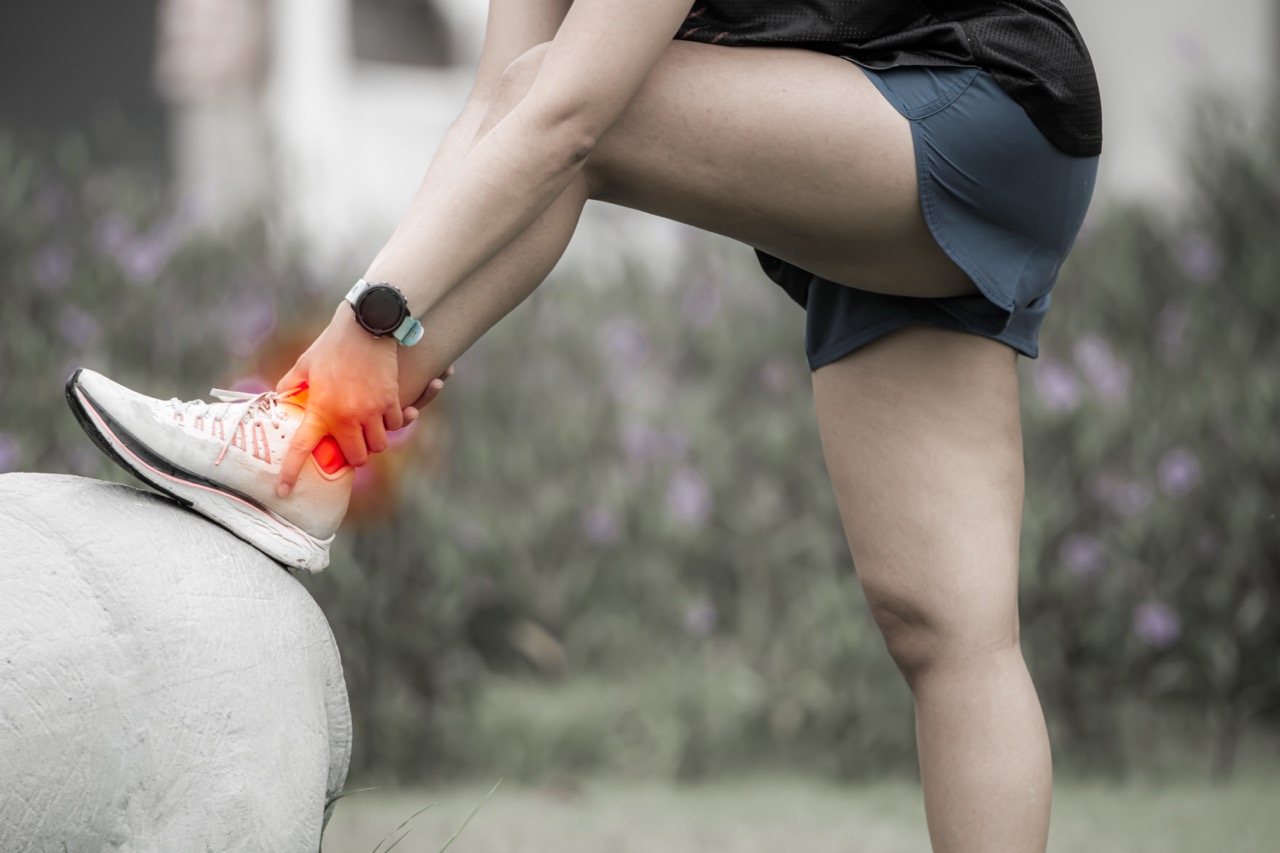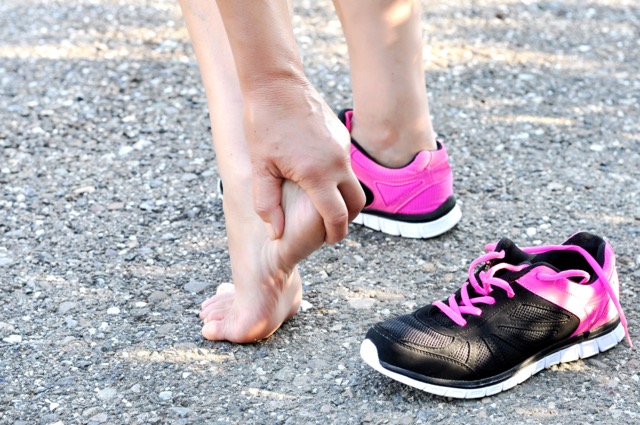Heel Pain and Running
Running is an excellent form of exercise that brings numerous physical and mental benefits. However, if you’re an avid runner experiencing heel pain, it can be frustrating and demotivating. Heel pain while running is a common issue that can stem from various factors, impacting your running performance and overall enjoyment. At Southern California Foot and Ankle Specialists, we understand the importance of pain-free running, and we’re here to help you uncover the root causes of your heel pain and find effective solutions. Let’s explore some common causes of heel pain and ways to alleviate it, so you can get back to running in no time.
Why do I have heel pain while running?
Several conditions can cause heel pain while running. Understanding these causes is essential to address the issue effectively. Here are some common culprits:
Plantar Fasciitis:
Plantar fasciitis is a prevalent condition that occurs when the thick band of tissue (plantar fascia) that connects your heel bone to your toes becomes inflamed. The repetitive impact of running can strain the plantar fascia, leading to pain and discomfort, especially in the morning or after prolonged periods of rest.
Stress Fractures:
Stress fractures are tiny cracks in the bones, often caused by overuse and repetitive stress on the feet. Runners who increase their mileage or intensity too quickly may be at risk of developing stress fractures, resulting in localized heel pain.
Achilles Tendonitis:
Achilles tendonitis is the inflammation of the Achilles tendon, which connects the calf muscles to the heel bone. Runners who engage in excessive hill running, sudden changes in training intensity, or inadequate footwear may be prone to this condition, leading to discomfort in the back of the heel.
What can I do to be rid of heel pain while running?
If you’re experiencing heel pain while running, it’s crucial to take steps to alleviate the discomfort and promote healing. Here are some practical measures you can try:
Rest and Recovery:
The first step in treating heel pain is to give your feet ample time to rest and recover. Avoid activities that exacerbate the pain, such as high-impact running or strenuous exercises. Instead, consider low-impact alternatives like swimming or cycling to maintain your fitness levels while giving your heels a break.
RICE (Rest, Ice, Compression, Elevation):
Immediately after running or when you experience pain, practice RICE therapy. Rest your feet, apply ice to the affected area for 15-20 minutes every few hours, use compression bandages to reduce swelling, and elevate your feet to encourage blood flow and reduce inflammation.
Stretching Exercises:
Perform regular stretches targeting the calves, Achilles tendon, and plantar fascia. Stretching can help improve flexibility, reduce tension, and prevent further strain during running. Include exercises such as calf stretches against a wall, Achilles tendon stretches, and rolling a frozen water bottle under your foot to massage the plantar fascia.
Proper Footwear:
Ensure that you have proper running shoes that provide adequate support and cushioning. Choose shoes designed for your foot type and running style to help distribute pressure evenly and reduce strain on your heels.
Low-Impact Exercises to Switch Up Routine:
Consider incorporating low-impact exercises into your routine, such as yoga, walking, or biking. This can give your heels a break from the repetitive impact of running while still keeping you active. Low-impact exercises also help maintain cardiovascular fitness and muscle strength.
Gradual Progression:
If you’re returning to running after a period of inactivity, it’s essential to build up your mileage and intensity gradually. Sudden increases in running volume can lead to overuse injuries, including heel pain. Follow a structured training plan and listen to your body’s signals to avoid pushing yourself too hard too soon.
When do I need to see a doctor about my heel pain?
If your heel pain persists despite home remedies and lifestyle adjustments, it’s time to seek professional medical advice. Additionally, you should consult a doctor if the pain becomes severe, limits your mobility, or affects your daily activities. Seeking timely medical attention is crucial to prevent the condition from worsening and to facilitate proper healing.
What can a podiatrist do?
Visiting a podiatrist is a wise decision to accurately diagnose the underlying cause of your heel pain and develop a personalized treatment plan. Some of the interventions a podiatrist may recommend include:
Custom Orthotics:
Custom orthotic inserts are designed to provide support and cushioning, tailored to your individual foot structure and gait. These inserts can help reduce pressure on the affected area and promote proper foot alignment during running. Podiatrists may also recommend off-the-shelf orthotics for mild cases of heel pain.
Injection Therapy:
For conditions like plantar fasciitis or Achilles tendinitis, corticosteroid injections may be administered to reduce inflammation and relieve pain. While injections offer temporary relief, they are typically used in conjunction with other treatments to address the root cause of the pain.
Physical Therapy:
A podiatrist may refer you to a physical therapist who can guide you through a customized exercise program to strengthen the muscles supporting your feet and ankles. Physical therapy can improve flexibility, stability, and overall foot function, reducing the risk of recurring heel pain.
Extracorporeal Shock Wave Therapy (ESWT):
ESWT is a non-invasive procedure that uses shock waves to stimulate healing in the affected area. It has shown promising results in treating chronic plantar fasciitis and other heel pain conditions that have not responded well to conservative treatments.
Surgery for Severe Cases:
In rare cases where conservative treatments fail to provide relief, surgical intervention may be considered for conditions like chronic Achilles tendinitis, persistent stress fractures, or severe plantar fasciitis that doesn’t respond to other therapies. Surgical options will be discussed thoroughly with the podiatrist, weighing the benefits and potential risks.
Contact us today:
Don’t let heel pain hinder your passion for running. If you’re experiencing discomfort during your runs, our team at Southern California Foot and Ankle Specialists is here to help. Our expert podiatrists will conduct a comprehensive evaluation to identify the root cause of your heel pain and recommend the most effective treatment options tailored to your needs.
Our goal is to get you back on track to pain-free running and help you reach your running goals. Contact us today to schedule an appointment and take the first step toward an active and enjoyable running experience.
Heel pain while running can be a frustrating obstacle for any dedicated runner. However, with the right knowledge and guidance, you can overcome this challenge and return to pain-free running. Identifying the underlying causes of heel pain, such as plantar fasciitis, stress fractures, or Achilles tendinitis, is crucial in finding effective solutions.
At Southern California Foot and Ankle Specialists, our dedicated team of podiatrists is committed to helping you get back on your feet. From recommending RICE therapy and stretches to providing custom orthotics, injection therapy, and surgical options, we offer a comprehensive approach to address your heel pain effectively.
Don’t let heel pain slow you down; contact us today to schedule an appointment and take the first step towards enjoying running without discomfort. Together, we’ll pave the way to a pain-free and rewarding running journey, so you can continue doing what you love – running to your heart’s content.




